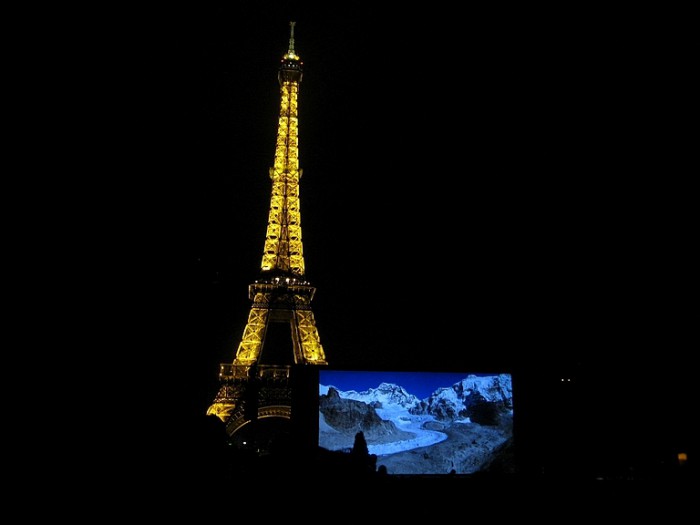
Paris is currently in the global limelight because of the terrorist attacks last Friday, but at the end of the month delegates from around the world will converge there for the United Nations Climate Change Conference. News organizations around the world are sending reporters to the summit, known as COP21, and plotting how to cover the talks efficiently and movingly, when the meat of the event involves people arguing in conference rooms.
The Christian Science Monitor is opting for a more focused approach, gathering all its coverage of the summit in a single-topic standalone site (complete with some advertising), taking as its inspiration other single-subject news sites like Syria Deeply or Ebola Deeply.“The Paris talks are hugely important in their own right, but they also present us with an opportunity for us to package the content under one roof,” said the Monitor’s energy editor David Unger, who put together the site and will be reporting and filing from Paris during the summit. “We do a lot of great energy and climate coverage at the Monitor, but we don’t put it together in the same place and let it exist all together for people who want to read those kinds of stories.”
The site presents a lot of climate information at once, but it’s ordered in a way that’s designed to be inviting both to readers who need to start from scratch on Summit news and to those who follow along regularly and just want the latest updates. It offers a brief introduction as a sort of table of contents, directing readers to the various sections: first the regularly refreshed “Notebook,” consisting of bloggier takes on climate-related news out of Paris and tidbits from the energy and environment world, followed by a map visualization that tracks climate pledges from countries around the world and a collection of pre-Summit climate stories from the Monitor. An explainer section on why the talks matter rounds out the site. (Unger is sharing the writing workload with the Monitor’s D.C. correspondent Cristina Maza, and science reporter Pete Spotts put together the explainer.)“I wanted a platform that would allow me to file quickly from Paris, sometimes in short little bursts,” Unger said. “I wanted to be able to package various stories in various ways that let them feel and look different from all the regular coverage you might see.”
The “bloggier” strategy opens the Monitor up to injecting a “little bit more of a human voice” to bureaucratic meetings, Unger added. He also hopes to “be as multimedia as possible” when filing Paris coverage.
The site is powered by Atavist and leverages other user-friendly, off-the-shelf visualization tools like CartoDB. Unger pointed me to a site the Monitor designed for its coverage of the 2000 climate talks in The Hague — now mostly a repository of stories from 2000, though at the time it allowed reporters to quickly file dispatches while giving the stories a home and context among the Monitor’s other environment coverage.
“Ten, maybe five years ago, I wouldn’t have been able to build the site I wanted. But now I can build the site, build the interactive map myself, and use MailChimp to retain and grow the audience.”
As is the case with any hyper-specific news initiatives, Unger said he is hoping for a larger audience made up of both “insiders” and also “curiously engaged readers who aren’t necessarily experts in this stuff.” For the initial round of promotion, Unger chose to target rather than sharing widely. He used the email lists the Monitor had already built up, and also sent the site to a few energy news and information aggregators. There are no separate social media accounts for the site, but Unger said he’ll work with the Monitor’s social media coordinator to do some pushes.
Unger isn’t worrying too much about how he and his colleagues can extend the site beyond December 11, when the Paris talks officially conclude, but said he hopes it will transform into something else after COP21.
“Worst case scenario, it becomes a sort of ebook document that lives in perpetuity,” he said. “My hope, though, would be that the site becomes kind of more than an archive and takes on a life of its own, maybe somewhere we can continue tracking these countries post-summit.”